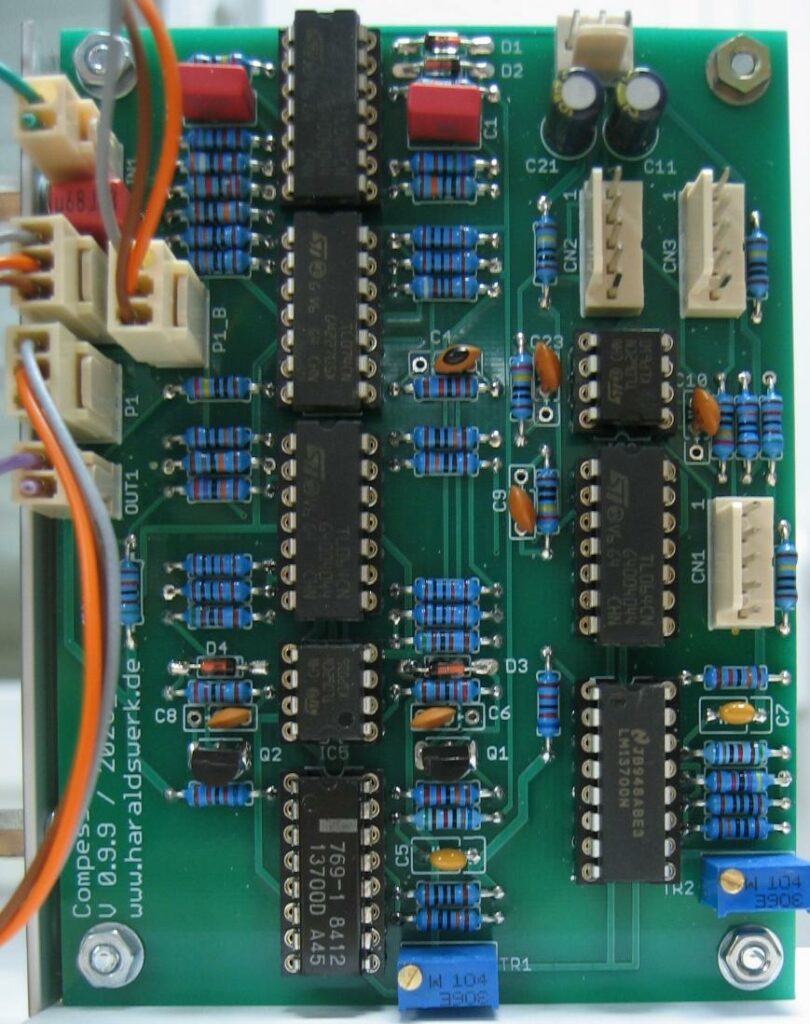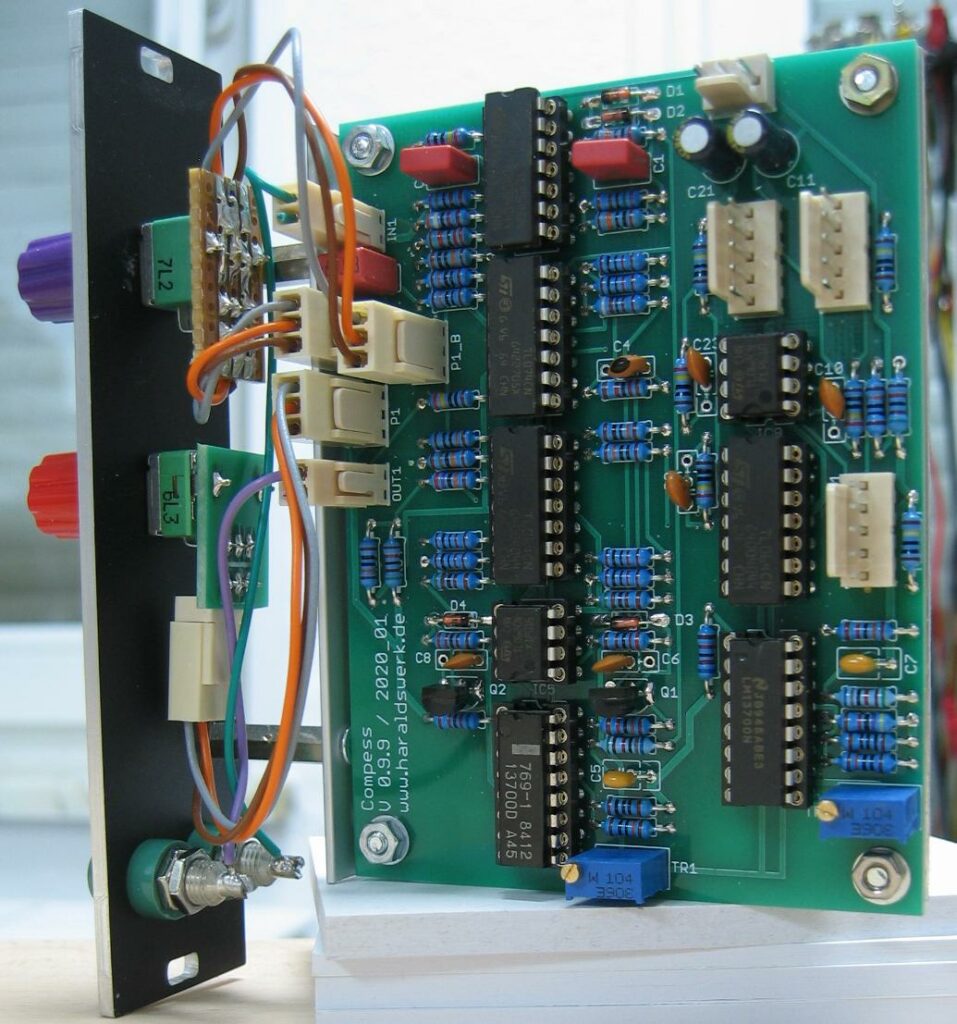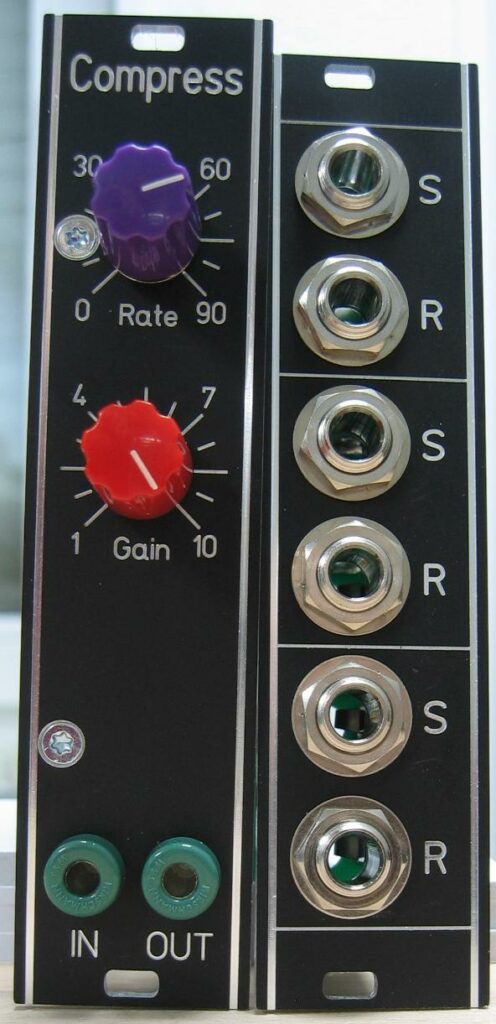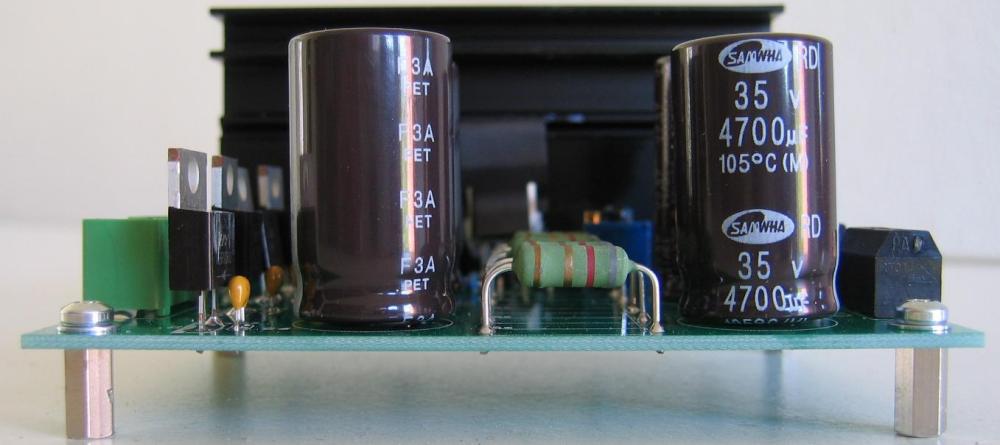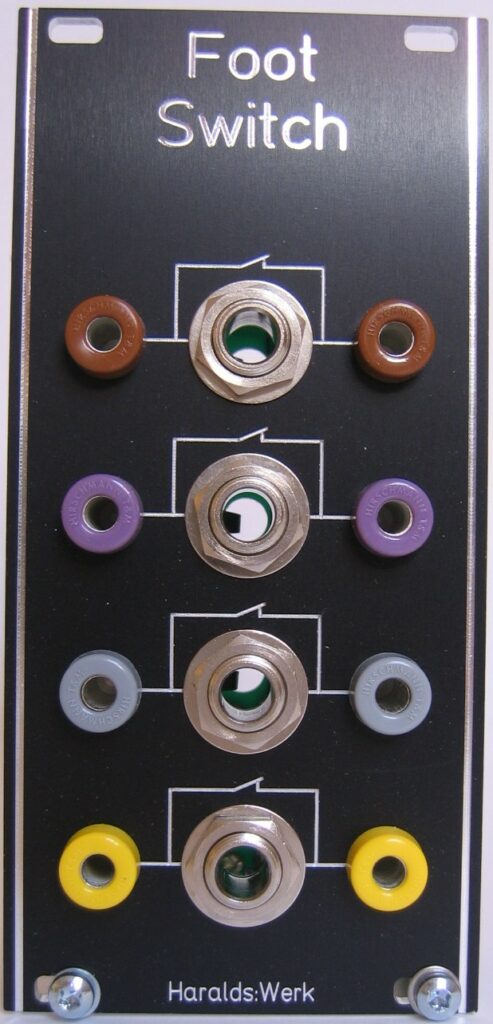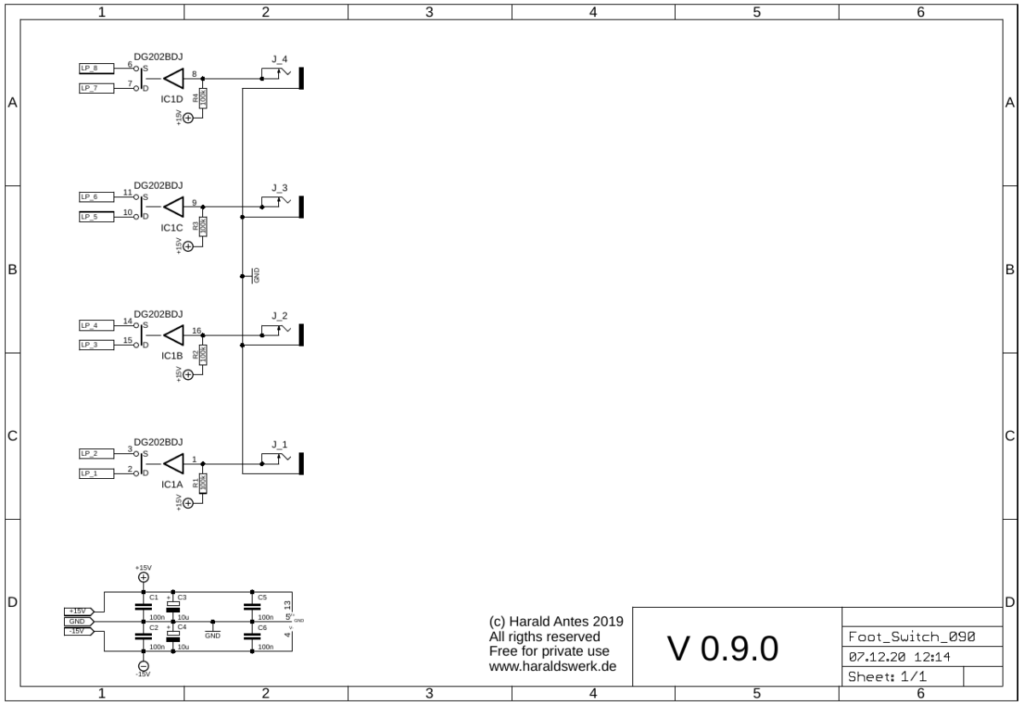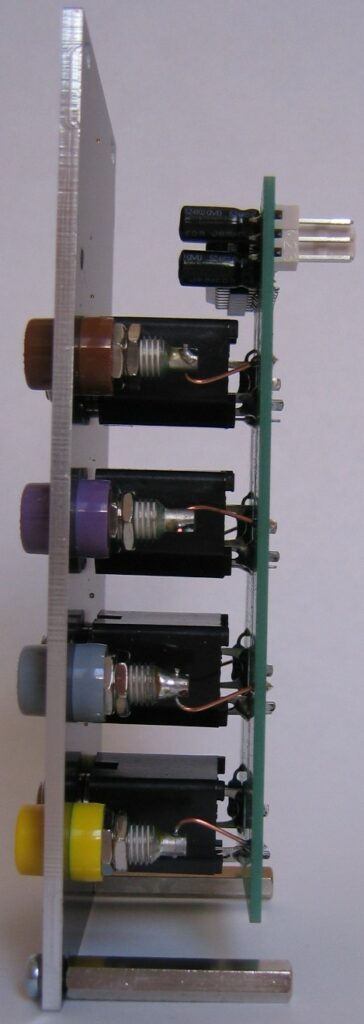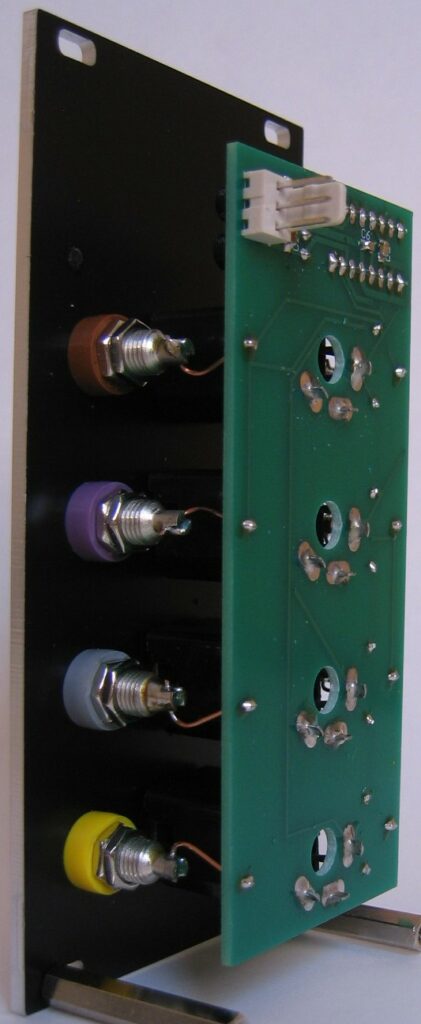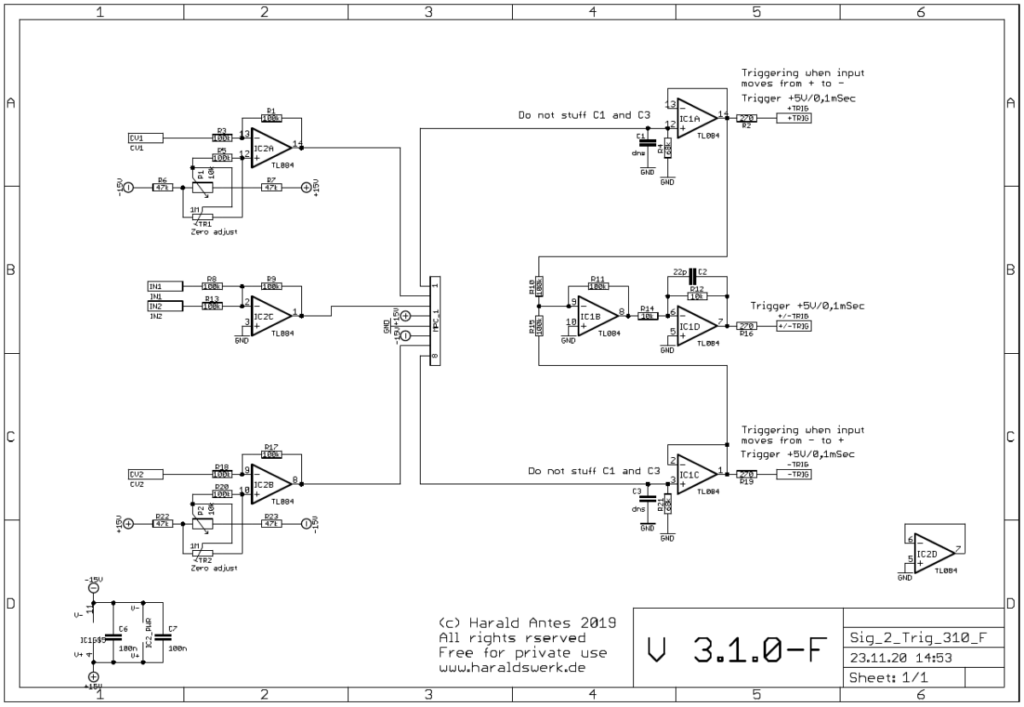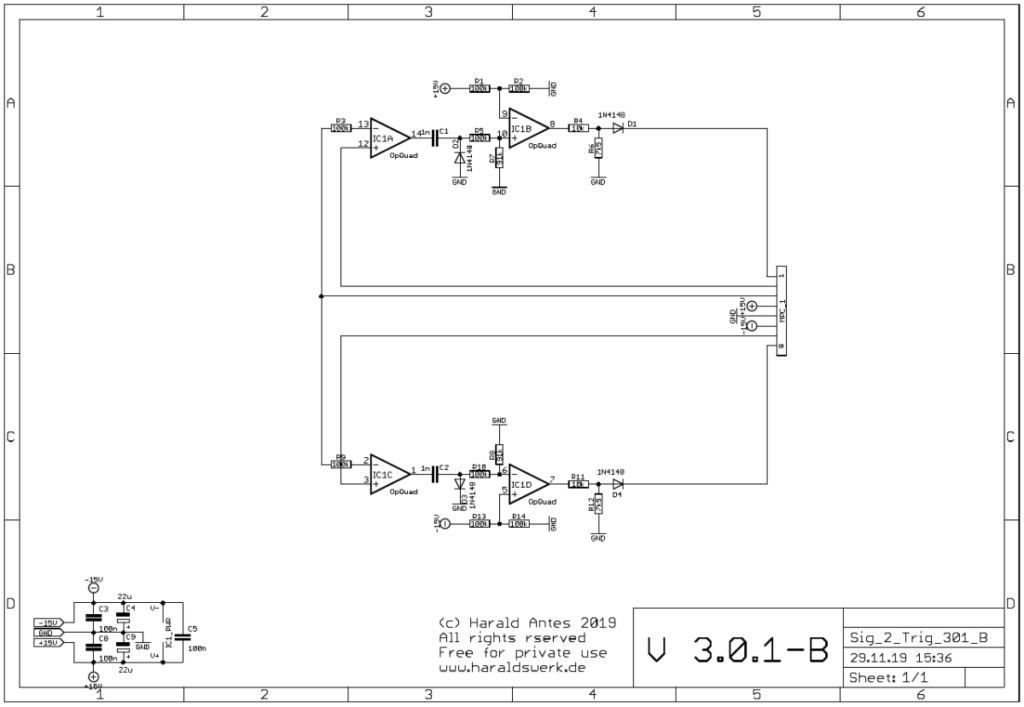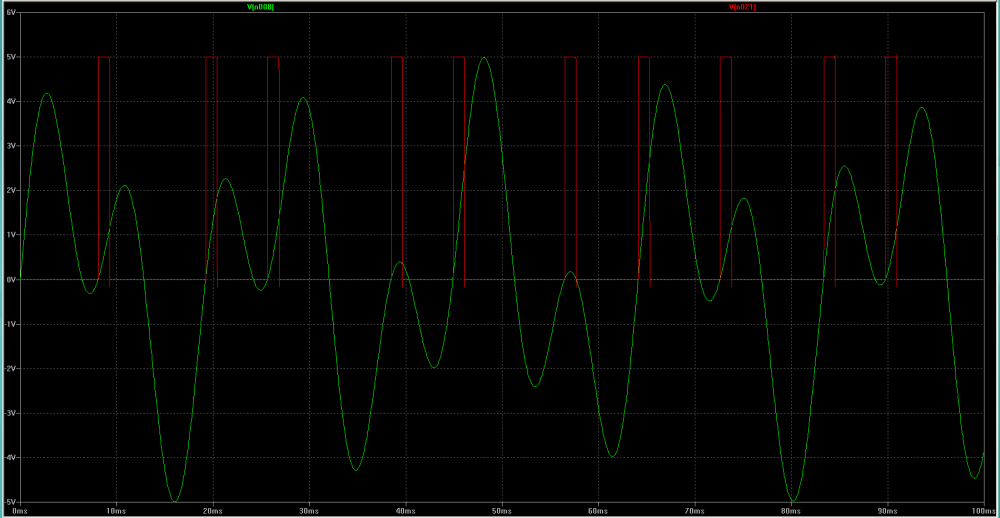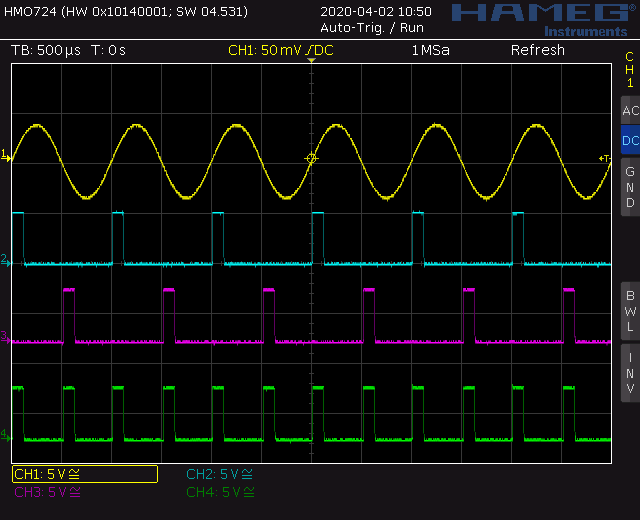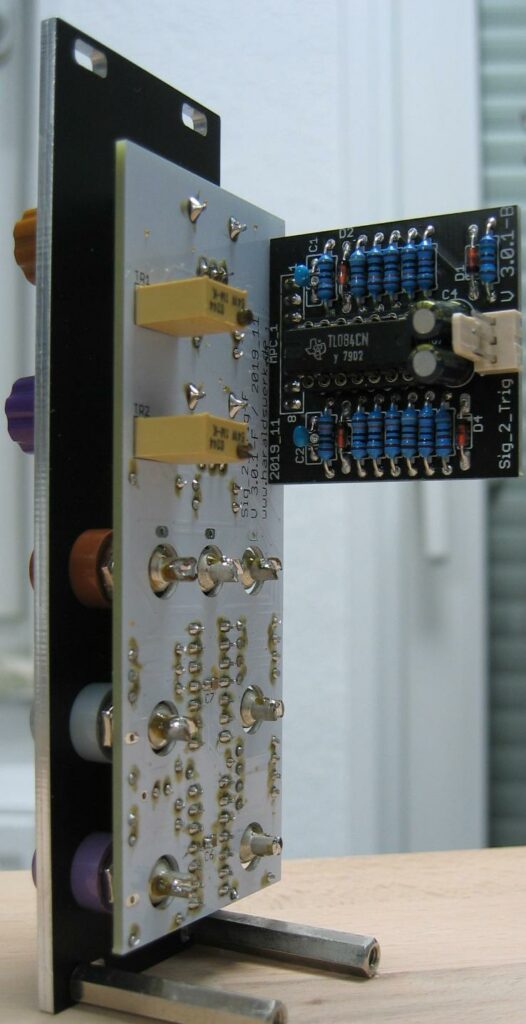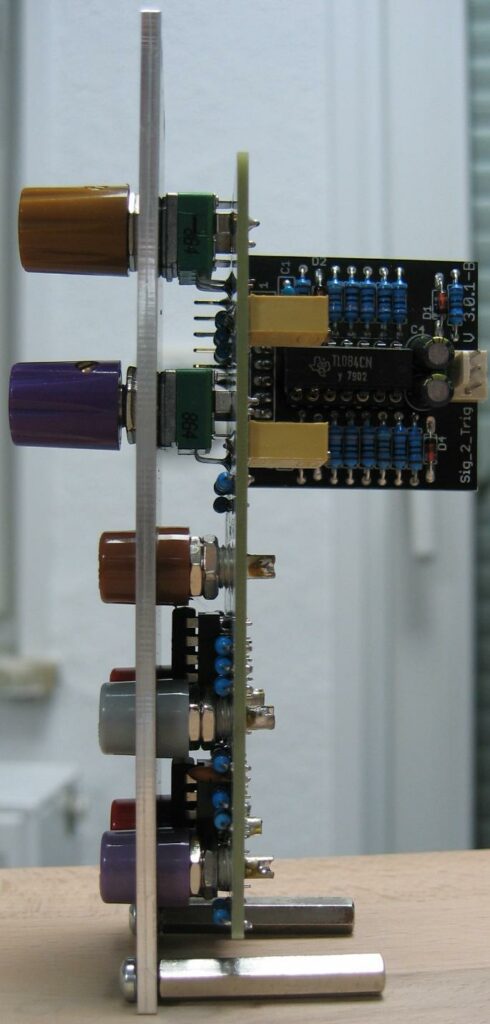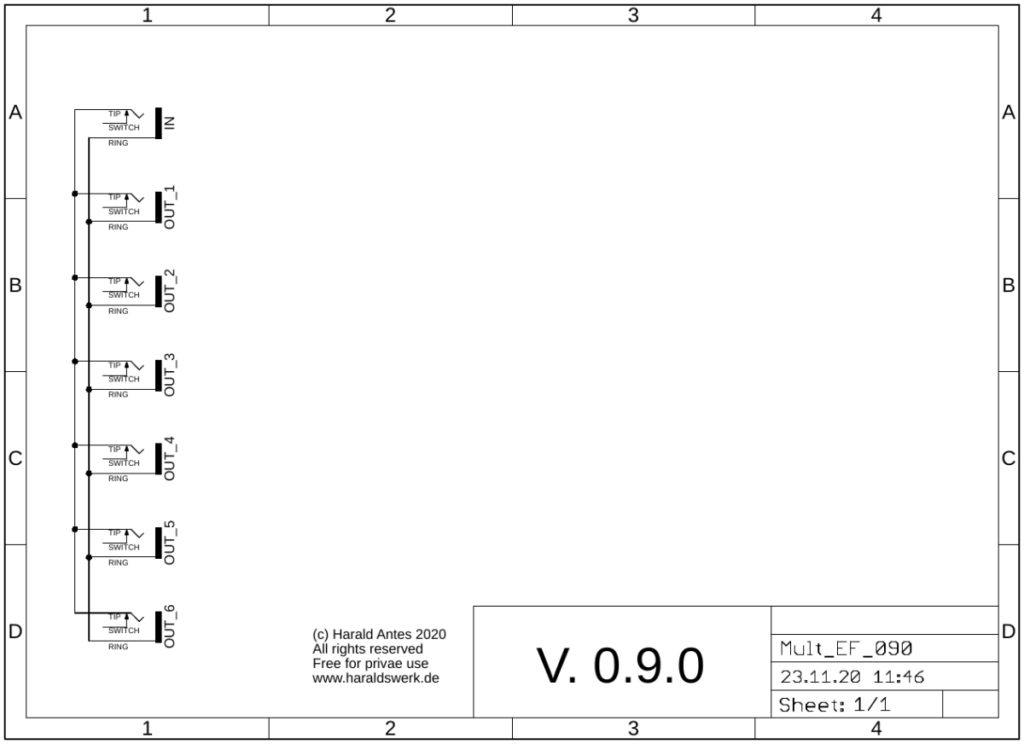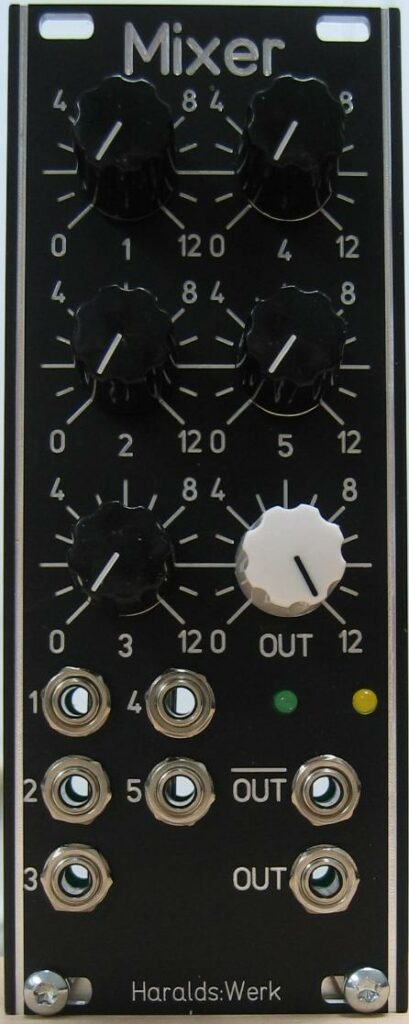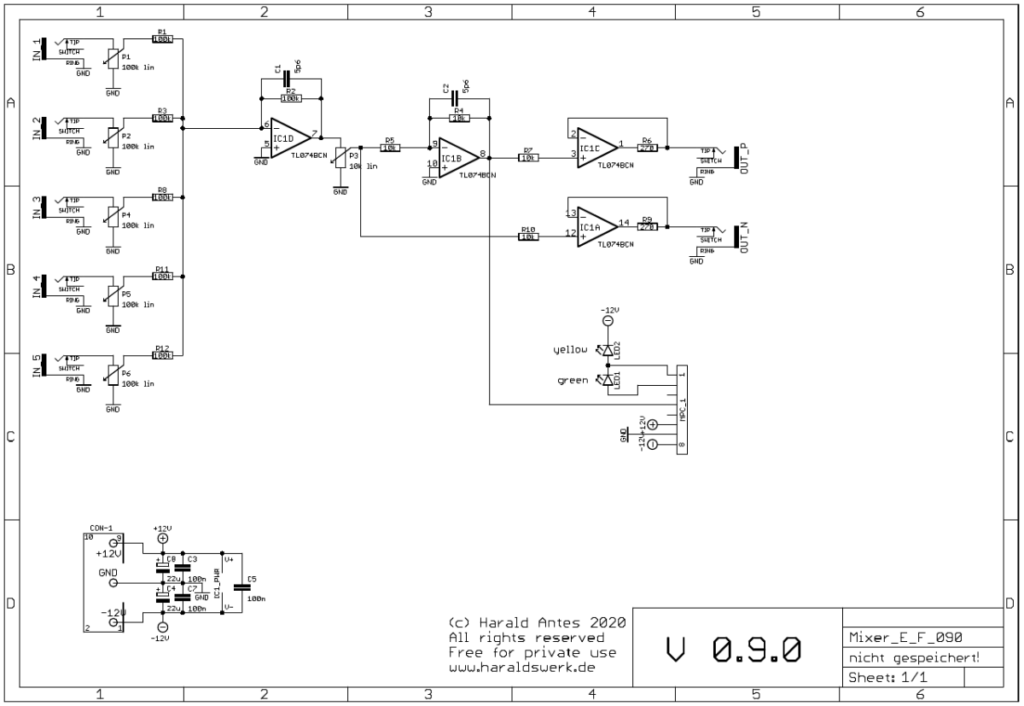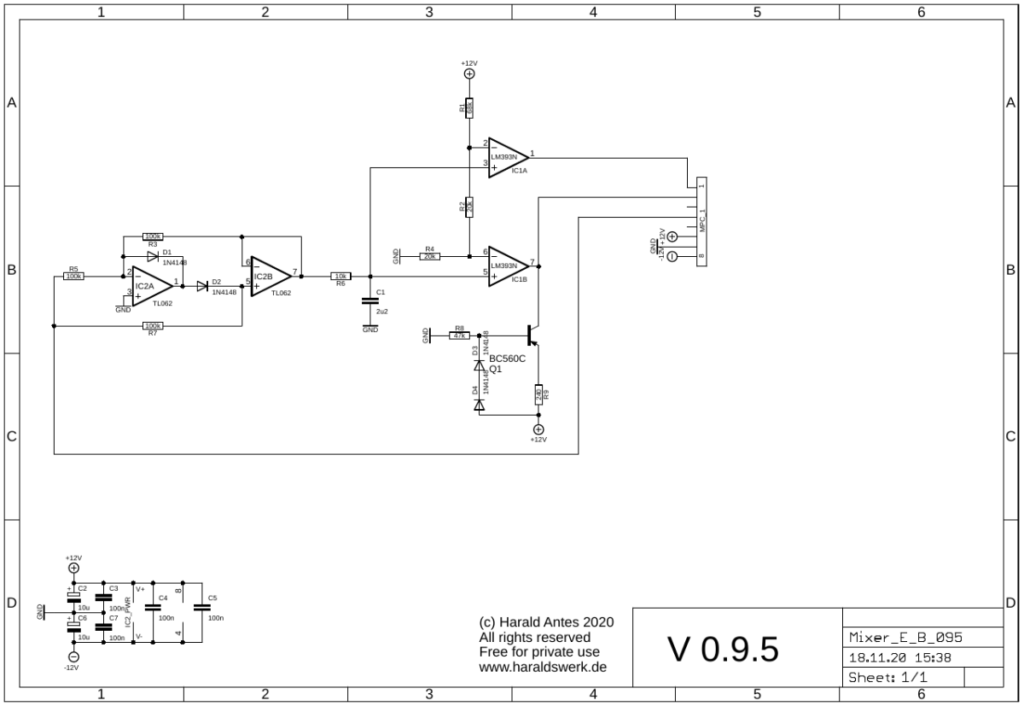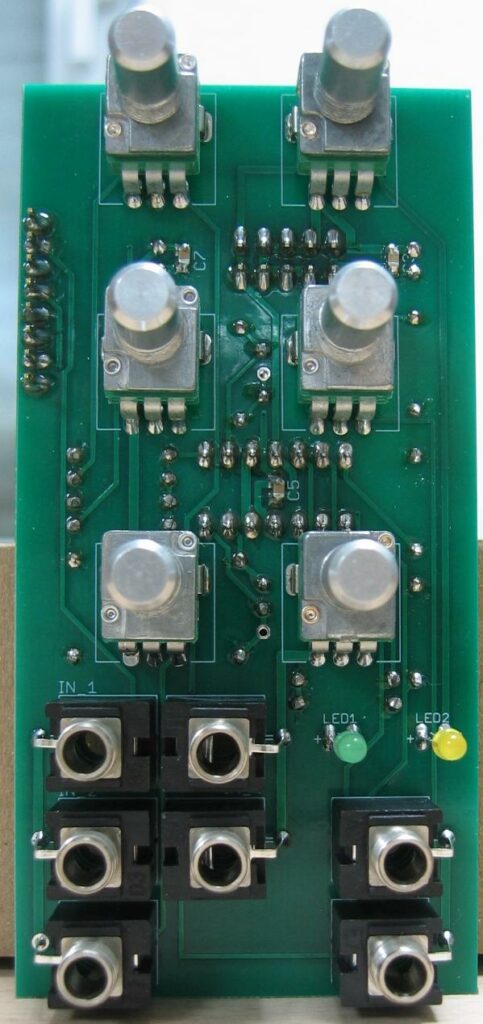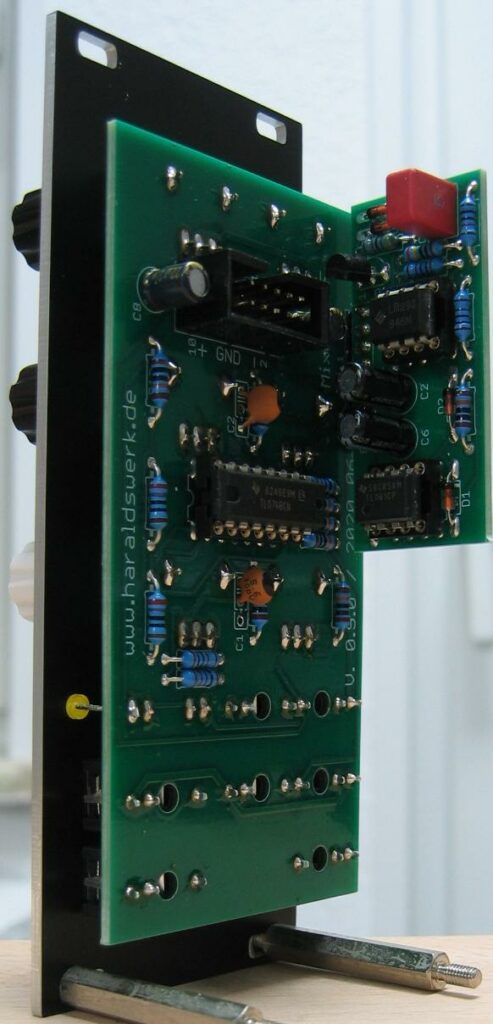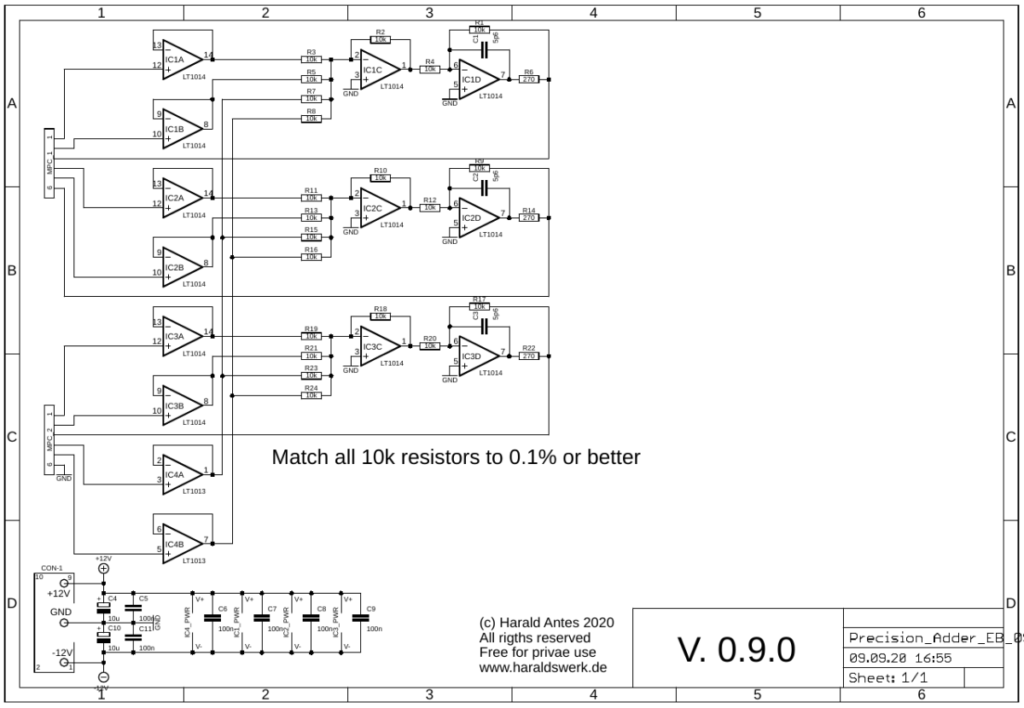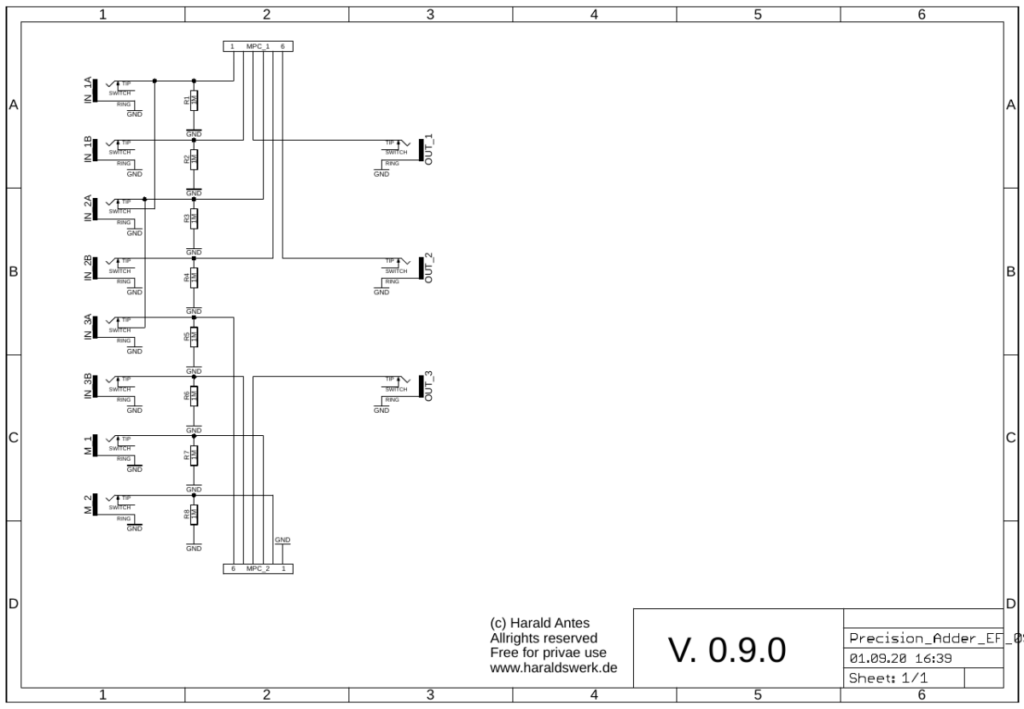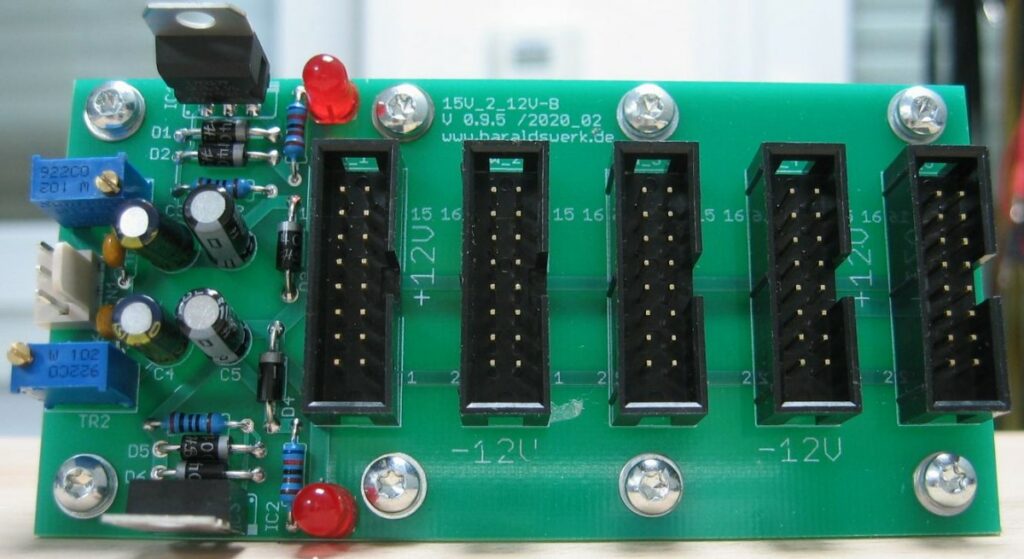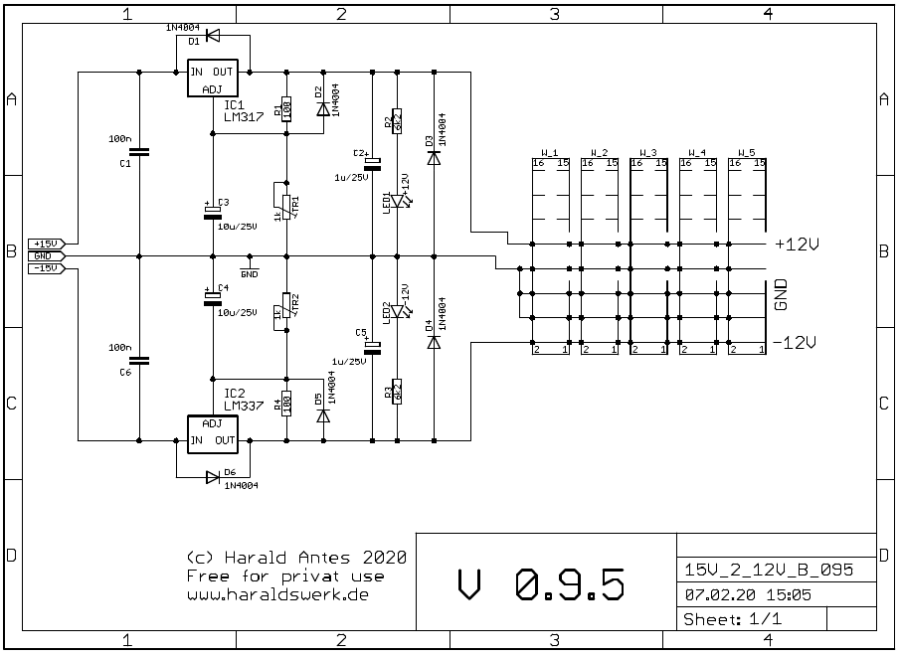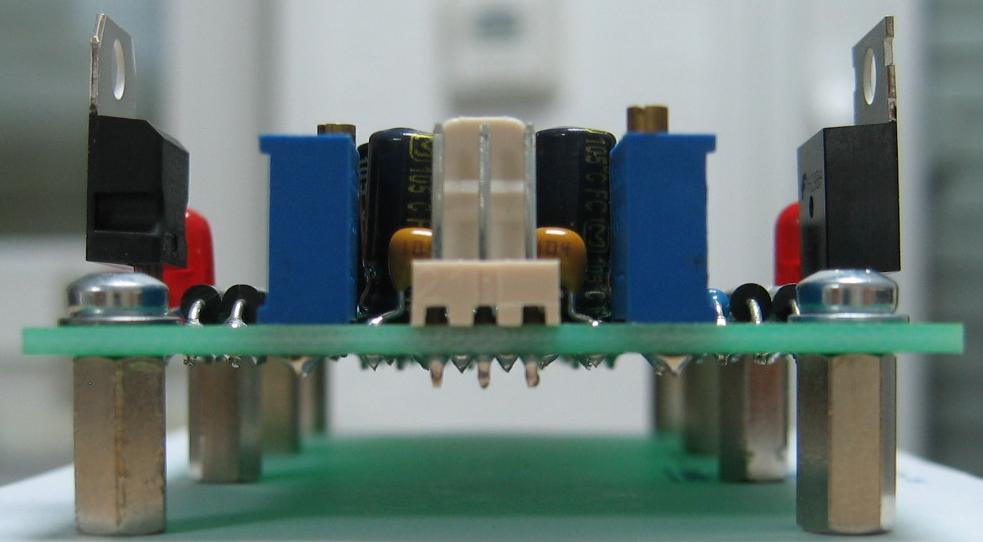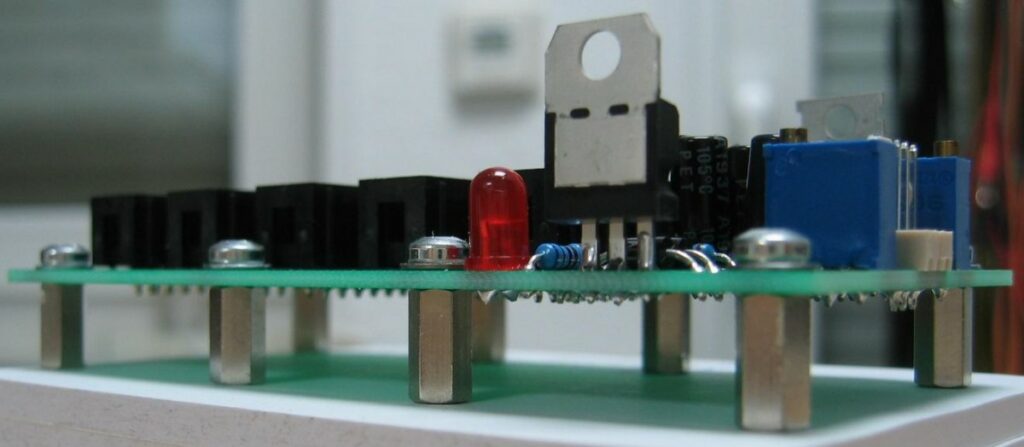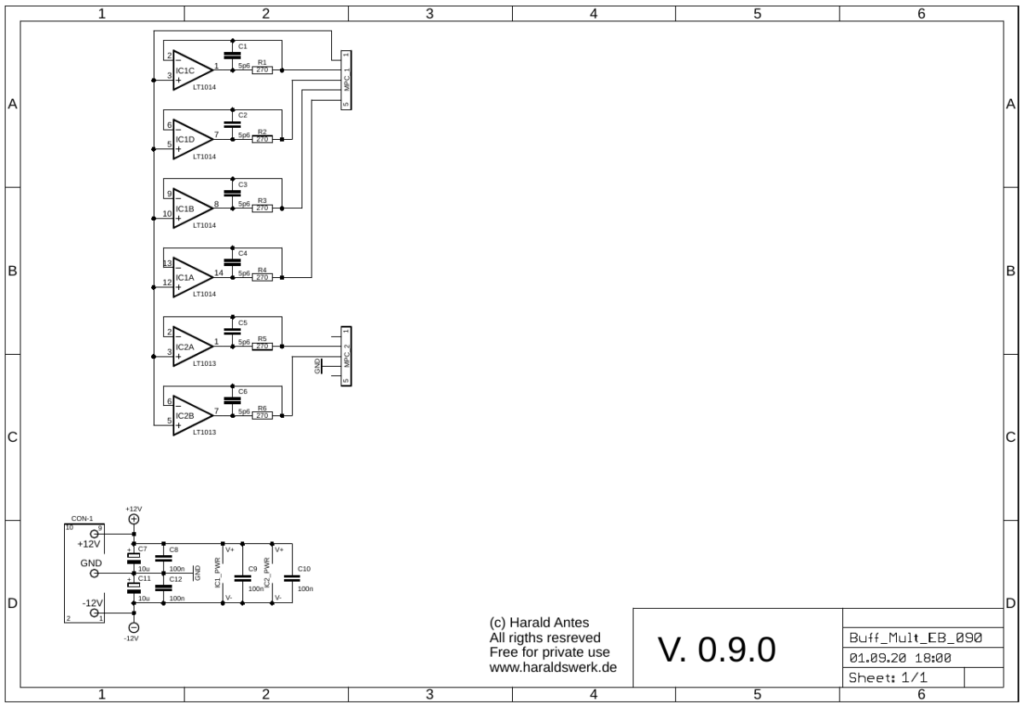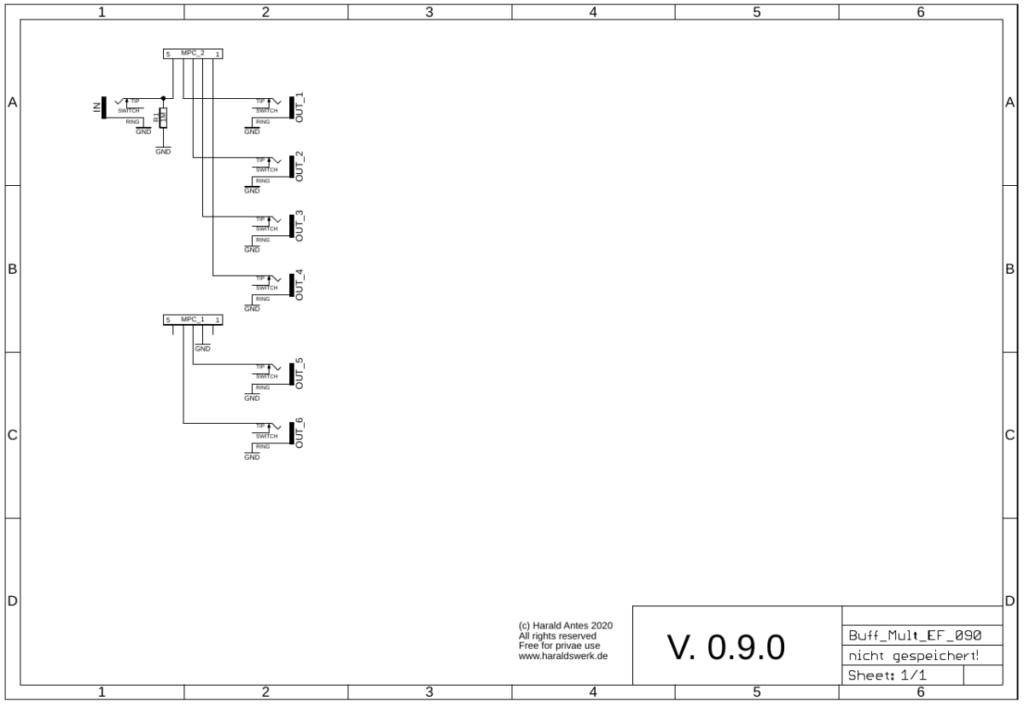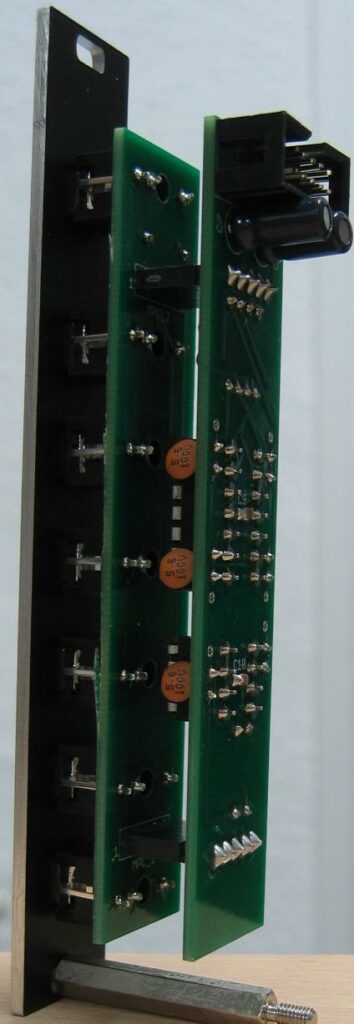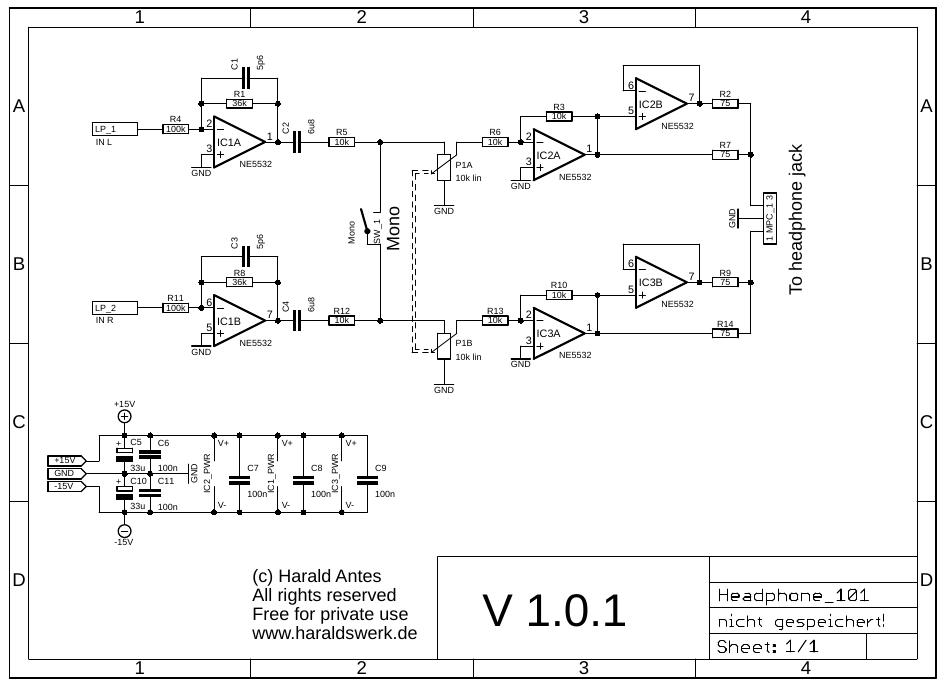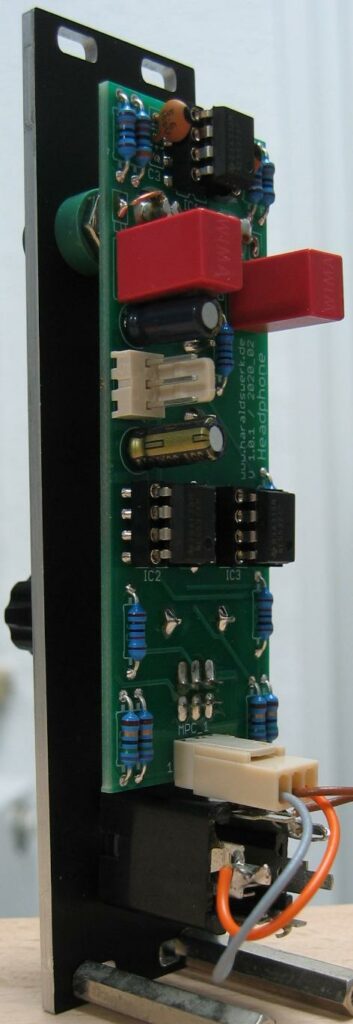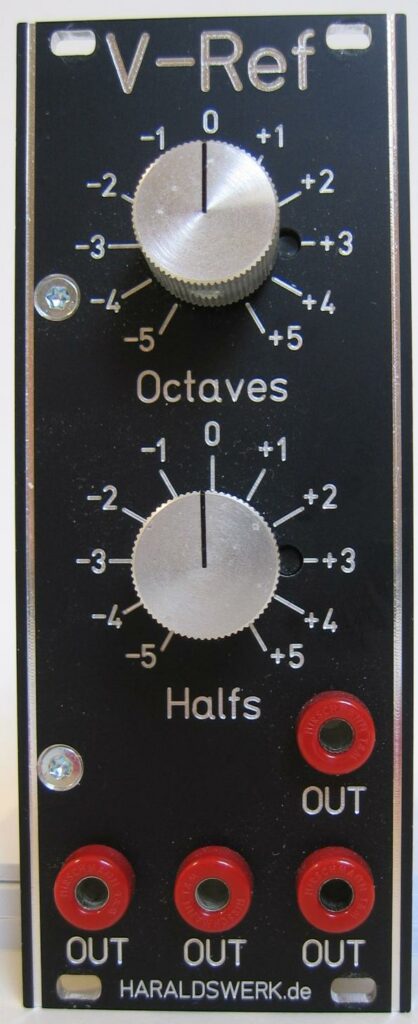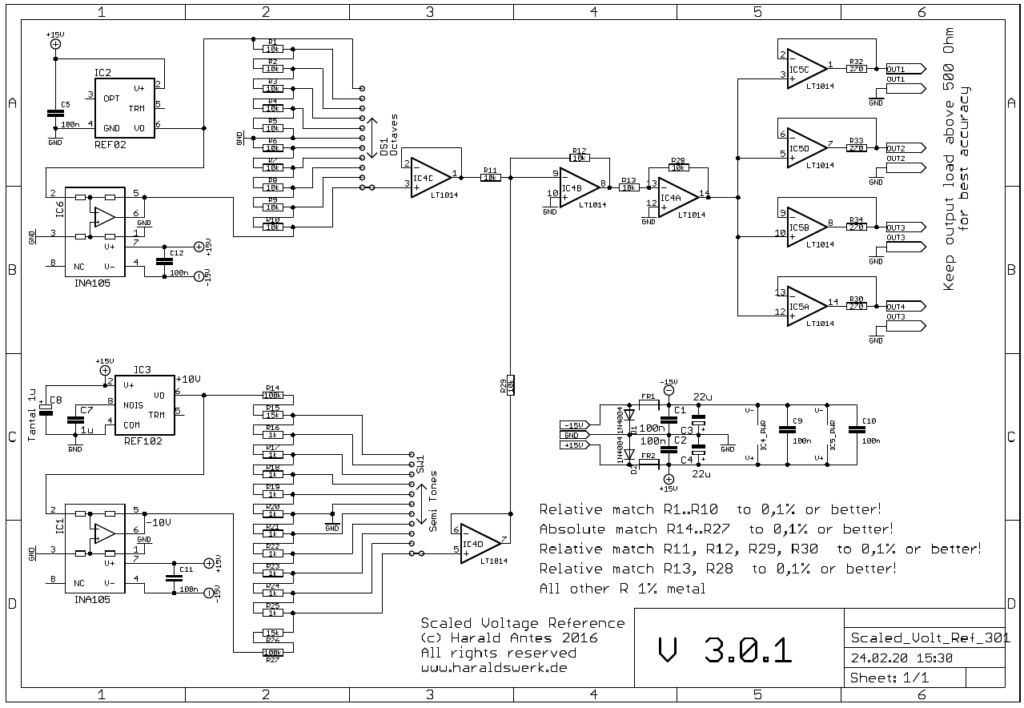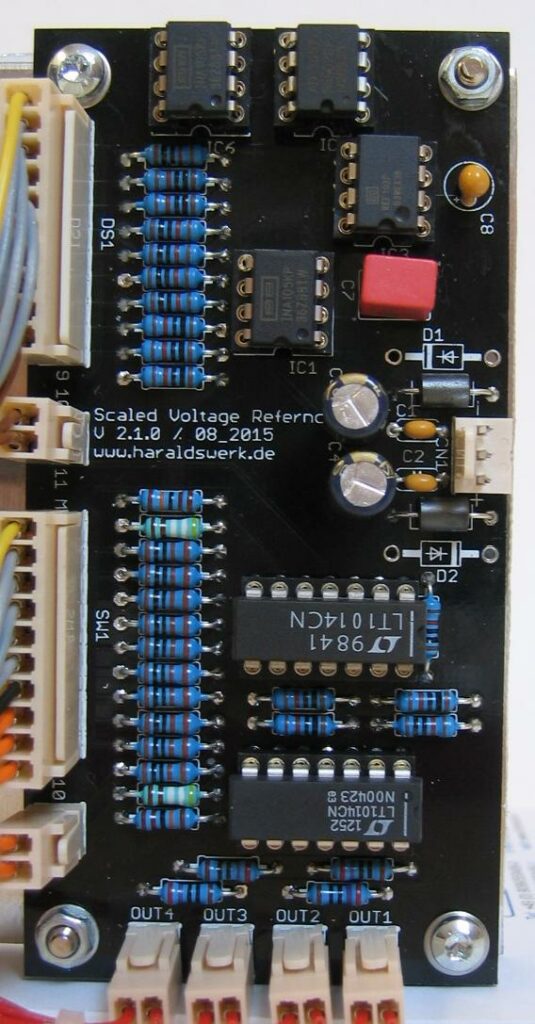
This is the revised version of my Limiter/Compressor. First built for my Shakuhachi to Synth project to handle the great dynamic range of the Shakuhachi. Here I left out the limiter and added a make up amplifier. The structure used is derived from “Small Signal Audio Design”, second edition by Douglas Self p682ff. The audio signal did not flow through a VCA as in many other implementations. Instead the compression is done by subtracting the audio signal at the output summing node according to the control voltage derived from the audio signal. The compression rate and the make up gain is adjusted by hand or/and optionally with foot pedals. The foot pedals are an additional option particularly made for wind players. It works without this option in your setup as well.
Specs and features
- Compression rate and gain adjustable by hand or/and foot pedals
- Audio path not affected when no compression is used
- Runs on +/-12V and +/-15V (with minor resistor value changes for best performance)
- Power consumption below 20mA each rail
The documentation and the Gerber files for download can be found in my website.
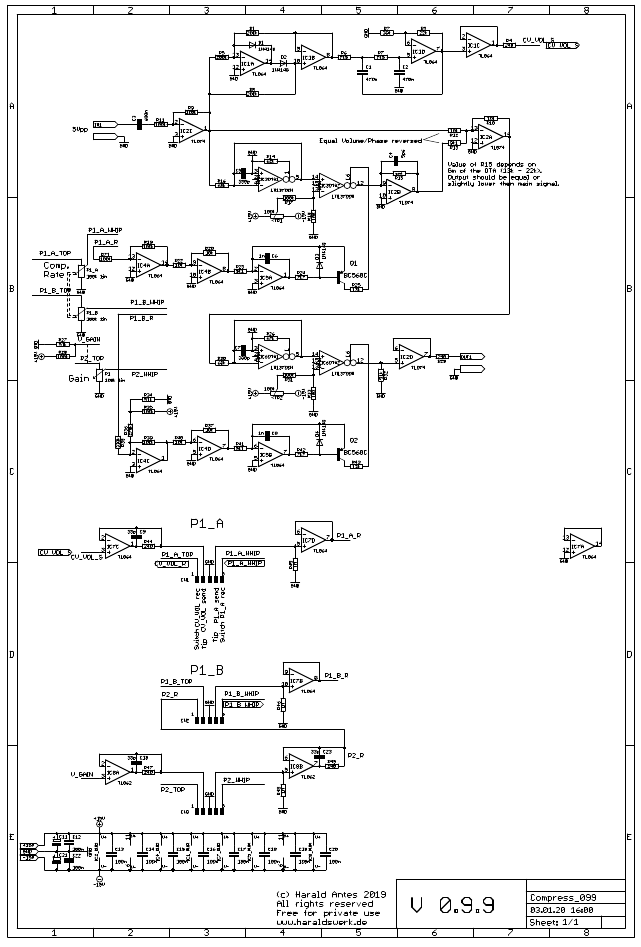
When the ratio is set to zero and the gain to one the input signal passes through the circuitry unaffected (IC2C, IC2A IC6OTA1, IC6OTA2, IC2D). When the compression rate is turned up a DC voltage is derived from the input signal wit a precision full wave rectifier and some filtering (IC1A, IC1B, IC1C, IC1D). This voltage is used to open the VCA in the side chain (IC3OTA1, IC3OTA2, IC2B). The signal from the side chain is then subtracted from the main signal (R13, IC2A). The now compressed signal is then potentially amplified (IC6OTA1, IC6OTA2)
